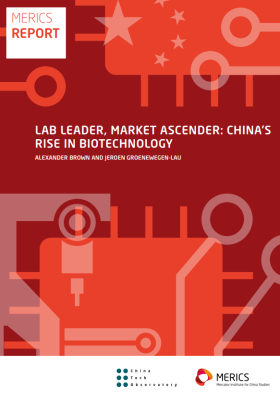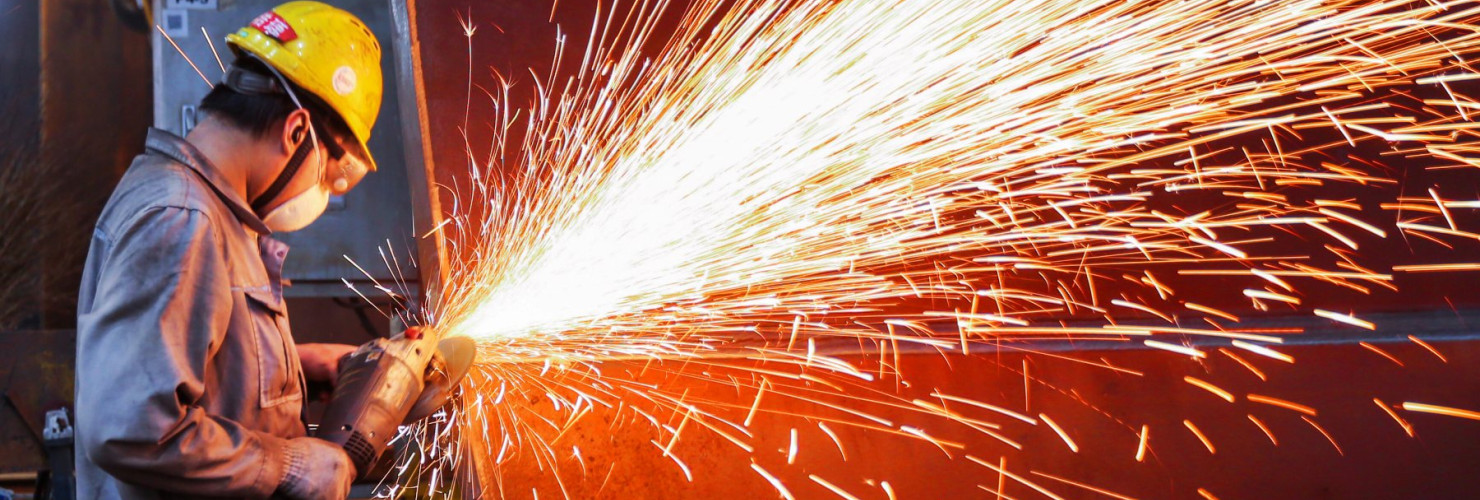

New industry workplans + "Made in China" + Energy storage
In this issue of MERICS China Industries, we cover the following topics:
- Staying the course: China’s industry workplans show investment remains prioritized over consumption
- The State Council sets deadline for implementing “Made in China" rules in government procurements
- NDRC energy storage plan zaps new stimulus into battery industry
- State Council’s new clinical trial regulations may test biopharma
- China’s future tech ambitions overlap with EU agenda
1. Staying the course: China’s industry workplans show investment remains prioritized over consumption
At a glance: The Ministry of Industry and Information Technology (MIIT) and several other departments issued workplans targeting eight specific industries, which set out growth targets for 2025 and 2026 (see exhibit 1 for more detail).
MERICS comment: The workplans show Beijing is sticking to its focus on the growth and upgrading of the manufacturing sector. The growth targets exceed 10 per cent for some subsectors, such as for NEVs (+20 per cent unit sales), or leading power equipment companies (+10 per cent revenue growth). Targets for entire industries range from 3.5 percent to 6 per cent. These are not excessive targets measured by China’s policymaking norms but still strikingly high for industries already suffering overcapacity and overproduction. It signals the government is not planning a harsh crackdown on overcapacities. Although the workplans do call for tackling problems, such as disorderly competition and price wars, the proposed measures, including capacity management and industry self-regulation, are mostly vague. By contrast, the growth targets are not, suggesting officials will pursue these more strongly.
Likewise, Beijing’s continued commitment to manufacturing growth makes any substantial reorientation towards consumption unlikely. Granted, it often features as a key ambition in high-level party meetings and documents. Strengthening consumption was listed as the second most important economic task for 2024 in the readout from the 2023 Central Economic Work Conference (CEWC) and elevated to the top spot one year later. Yet, Beijing’s subsequent fiscal stimulus measures, estimated at 1.6 per cent of China’s GDP in 2025, mainly went towards public investment, with only 0.5 per cent of GDP directly earmarked for households.
Even consumer goods trade-in programs, intended to boost consumption, are supply-side focused and do not improve fundamental consumer confidence. Doing so would require more resolute measures to increase household income. Beyond that, most of the workplans do feature sections on boosting internal demand and consumption, but this is framed as way to absorb excess capacity, rather than rebalancing towards a consumption-led macroeconomic model. In sum, consumption can be expected to feature prominently again in the readout from the upcoming CEWC in December, but this is unlikely to be followed by substantial policy changes, let alone a shift to consumption-led growth.
For European companies and policymakers, the result is more fierce competition in sectors where China has the greatest overcapacities, at least in the short run. They can also expect increased competition from Chinese firms in global markets, especially in autos and new energy equipment, where China’s plans explicitly call for more exports.
Articles: Work Plan for Stabilizing Growth in the Automobile Industry (2025-2026) (Link); Work Plan for Stabilizing Growth in the Power Equipment Industry (2025-2026) (Link); Work Plan for Stabilizing Growth in Light Industry (2025-2026) (Link); Work Plan for Stabilizing Growth in the Steel Industry (2025-2026) (Link); Work Plan for Stabilizing Growth in the Building Materials Industry (2025-2026) (Link); Work Plan for Stabilizing Growth in the Petrochemical Industry (2025-2026) (Link); Work Plan for Stabilizing Growth in the Non-ferrous Metals Industry (2025-2026) (Link); Work Plan for Stabilizing Growth in the Machinery Industry (2025-2026) (Link)
2. The State Council sets deadline for implementing “Made in China" rules in government procurements
At a glance: The State Council further specified the rules to shape the selection of goods purchased through future government procurement. “Domestic products” will receive a 20 percent discount in the bidding evaluations. The regulation takes effect on 1 January 2026, with an implementation transition period of three to five years. To qualify for the discount, companies must meet the following requirements:
- Products must be substantially manufactured in China, not merely assembled or packaged there. By 2031, regulators will define the proportion of the product’s total cost that must be attributable to components or raw materials produced within China. They will first consult with companies and industry associations.
- For certain strategic or sensitive products, key components and manufacturing processes must also be completed within China.
- If the procurement involves a package of products, the entire bid will receive the 20 percent discount in the bidding evaluation process as long as at least 80 percent of a bid’s total value qualifies as “domestic products”.
MERICS comment: Previously, the government procurement law stated government procurement should favor domestic goods without defining them clearly. Foreign companies were already disadvantaged in public procurement, for instance through technical product standards tailored to suit local companies by local governments.
The new regulation steps up pressure on companies to localize their production lines in China. It favors enterprises already localizing in the country because it sets clearer limits for local protectionism. For companies that already have a high degree of localization, it has the benefit of greater clarity, which could be an improvement on vague rules and regulations or bad practices by local officials.


